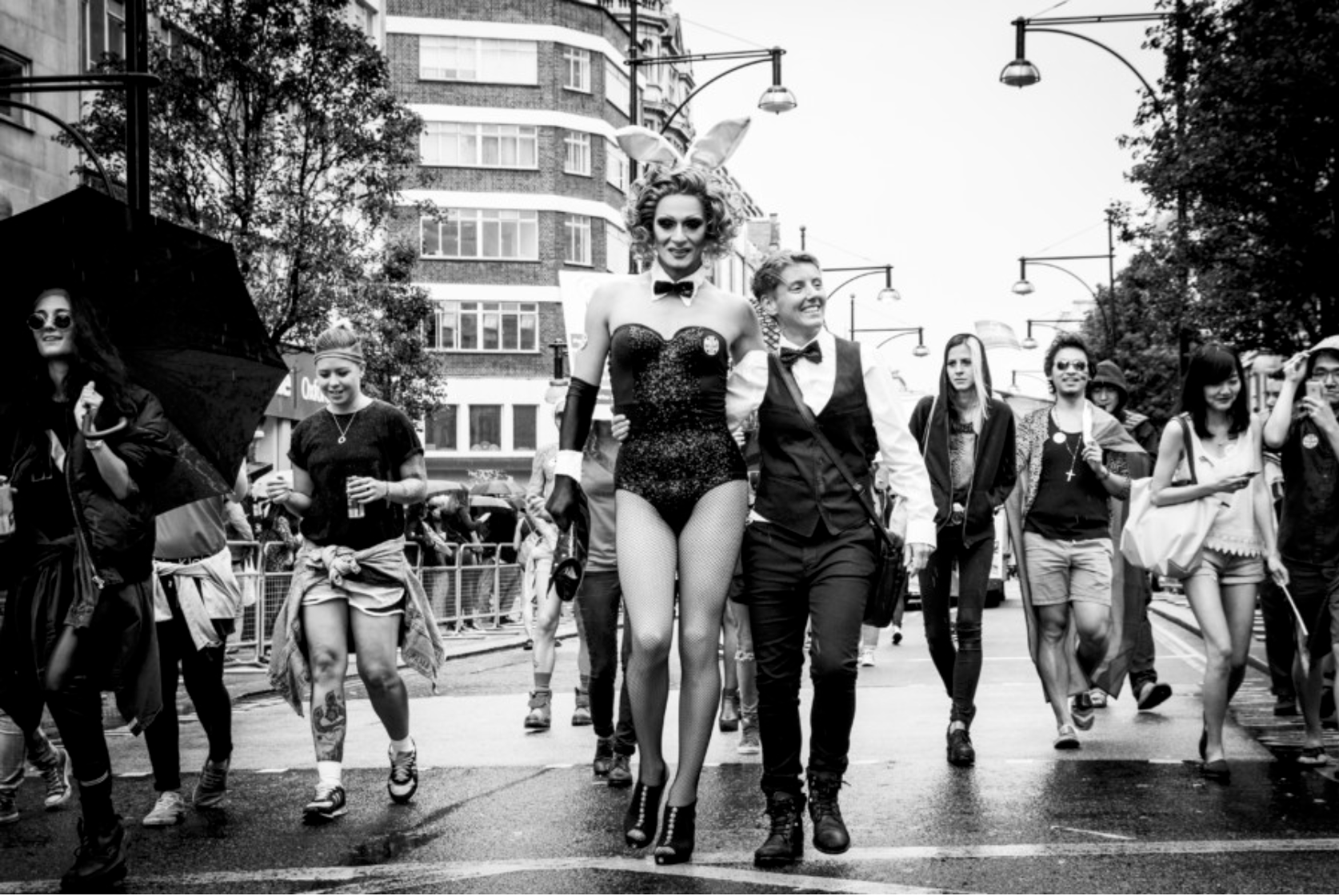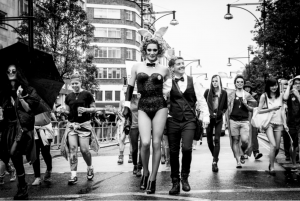Anna McNay: What are the key concerns or themes running through your practice?
Bronac McNeill: Honesty
AMc: How much a part of your work does self-portraiture form?
BMc: In recent years my work has moved from never shooting people to only shooting people. I love capturing reaction, emotion and people when they glow
with love, and especially capturing them doing what makes them tick. So turning the lens on myself is a real challenge and one that initially was an uncomfortable one.
AMc: As a woman looking at a woman (herself – but perhaps also other women, if you also make portraits of others), how aware are you of the conventions and load of the male gaze? To what extent do you work with or subvert these?
BMc: I take photos of women in many different situations, from work headshots, to parties through to portraits where I have more time to get to know them and convey their personality. In the privacy of the studio I often notice the difference in our relationship and even their stance if a male assistant or their male colleague comes into the room. For this reason I purposely try to have female teams in my studio. I regularly coach younger women in business shoots so they
portray a more serious persona than their usual selfie stance conveys. I want a truth that is them not what they have learned is expected of them to be acceptable. All too often I hear women apologise for their appearance and not being photogenic – what ever that means. I rarely hear men saying this. So I want to practise what I preach and show that the sum of my parts is strong like only a woman can be.
AMc: How – if at all – does your sexuality influence or shape your work, especially your self-portraits?
BMc: I don’t think there is any way my sexuality can’t influence my work as equally all my experiences and knowledge influences my work. My ability to relax a person in front of the camera comes from how I relate to the world and in particular the person in front of me. Interestingly it took me longer than I expected to relax myself and really look at my image.
AMc: As a woman who likes women, looking at women, do you feel your gaze is different from the gaze of a heterosexual woman artist? In what way?
BMc: I don’t think I can talk about heterosexual women artists but I often feel my gaze is more sympathetic, less competitive or critical, and more encouraging than a heterosexual woman expects. My subjects leave my studio feeling better about themselves and have voiced that they enjoyed learning how to control their learned patriarchal ticks or idiosyncrasies to their empowerment.
AMc: Can you say something about the work you are submitting for this exhibition? How are you seeking to portray yourself? What are the key aspects you’re drawing forth? Physical, psychological, sociological…?
BMc: I was once told by a lesbian friend that I am a ‘140 footer’. Allegedly this means you can tell I’m a lesbian from, yes you guessed it, 140 feet away. On hearing that a small part of me thought: ‘Oh no! My poor parents must be so upset.’ The rest of me laughed and was slightly proud. My gender is only part of me but one it’s taken a long time to embrace. I’d like to give an honest representation of myself but I’m struggling with what that actually is. I know I wear my heart on my sleeve and now I am seeing that in this work. I know I can hide my sad eyes from those who can’t be bothered the look but not from those who care for me. I don’t want the happy selfie that I do so well. I want to show a depth that is reflective of my life so far plus the contentment I feel in my life right now.
AMc: Do you seek to portray yourself as object, subject, or both? How does
this dynamic come through in your work?
BMc: This is only the second time I’ve worked on a self-portrait. The last time I was definitely an object, as I was so disconnected from the situation, I took the shots and left them for a year before I felt secure enough to work on them. Now I am a subject as I am very connected to the work, which I hope will be apparent.
AMc: Do you work in media other than photography? If so, how does the gaze offered by the camera differ from the viewpoint obtained through other media? How does the experience as artist differ? Does it make the act of looking easier or more difficult? If you don’t work with other media, what is it about the gaze of the camera that attracts you to working with photography?
BMc: I work in both stills and film, I’m not talented enough to paint or draw and so concentrate on what I love. I love it because what was once thought of as honest recording has now become as multi-layered as any artist’s impression. I record moments that otherwise would be lost forever. I refuse to over-photoshop and prove to clients that it isn’t needed – I want to capture the unique life in a subject and therefore the beauty of their life. That beauty doesn’t
always need to be happy.
AMc: What one work of art, depicting a woman as object – or subject, have
you been most influenced/impressed by and what is it about this work
that captures you?
BMc: Sorry I have no answer for this at present.
Bronac McNeill

